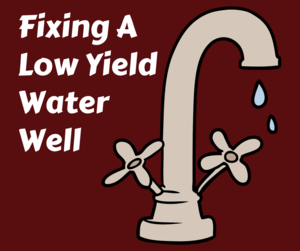CALL TODAY 1-800-441-6281
CALL TODAY 1-800-441-6281

What To Do If Your Water Well Gets Flooded
- Tags:
- water contamination
Living through a flood can be a scary experience. You may be concerned with the visible damage and recovery after a flood and may not realize that your well may have been contaminated. Floodwaters can carry pollutants that can contaminate your well and can also put you at risk of shock from waterlogged equipment and electrical lines.
In the event you do have a flood, there are immediate precautions to take to ensure your family’s safety. Let’s look at what to do if your well gets flooded.
IMMEDIATELY AFTER THE FLOOD SUBSIDES:
In the immediate aftermath of flooding it’s critical to follow these first steps:
• DO NOT drink or wash with your well water. Contaminants that may have washed into your well could make you sick.
• DO NOT turn on the well pump. There is an electrical shock danger, and you could severely damage your well or pump if they were flooded.
Contact your well professional for help in dealing with the impact. They can help with any contamination or equipment damage that may have occurred.
Test For Water Bourne Contaminants
You should assume that your water is contaminated after any flood. If your well is shallow, the well casing was flooded, or if you notice any changes in taste, color, or sediment you should test.
Flooding can introduce bacterial, viral, parasitic or chemical contaminants. They can enter the top of your well or seep down along the casing. Even if your well was not flooded, your neighbors well might have been, and contaminants could migrate underground to your well. Learn more about water testing.
If you suspect contamination, you will need to procure an alternative water source for drinking, cooking and washing. You could get water from a neighbor or your community water supply if available, or you could use bottled water. If none of these sources are available, boil your water vigorously for one minute before use. If you live over one mile above sea level, increase the boil time to three minutes.
Contact a state certified testing laboratory and have your water tested for bacteria. If you test positive for coliform bacteria, run an addition test for E.coli.
Disinfecting Your Well
If E. coli is detected your well will need to be disinfected. Have your well and your entire plumbing system disinfected using shock chlorination? Contact your water well professional.
They will have the necessary equipment, materials, and expertise to eliminate bacterial contamination.
Make sure your professional also checks your well system. Floodwater can carry large debris that can damage your well, loosen hardware or distort the well casing. The pump, valves, and gear may also need cleaning. There is also a risk of shock or electrical damage to your well and pump. Do not turn on the equipment until it is dry and has been cleared and checked by your water well professional or a qualified electrician.
There are ways to protect your well from flooding. Speak with your professional. They will have information on preventative measures you could take, like raising the well casing pipe at least two feet above the regional flood elevation for your location.
You can’t prevent flooding, but you can prepare for it. It’s a smart decision that can ensure you and your family’s well-being in the event of a disaster.

